| FAQ |
| Calendar |

 |
|
#1
|
||||
|
||||
|
The Lotus Europa was a two door mid-engined GT coup� built by Lotus Cars from 1966 to 1975. In 2006 Lotus began production of a totally new, Lotus Elise-derived design, a mid-engined GT coup� named Europa S. The original Europa used Lotus founder Colin Chapman's minimalist steel backbone chassis that was first used in the Lotus Elan, while also relying on its fibreglass moulded body for structural strength. The Europa was based on a prototype built to compete for Henry Ford II's contract to build a Le Mans race car in the early 1960s.[citation needed] The Europa was designed and built to be an embodiment of Chapman's oft-stated philosophy of automotive design: "Simplify, then add lightness." The four-wheel independent suspension was typical of Chapman's thinking. The rear suspension was a modified Chapman strut, as used for Chapman's earlier Formula racing car designs.[2] Owing to the rubber suspension bushes used to isolate engine vibration from the car body, the true Chapman strut's use of the drive shaft as the lower locating link could not be followed whilst still giving the precise track and handling desired. The forward radius arms were increased in size and rigidity, to act as a semi-wishbone.[2] A careful compromise between engine mounting bush isolation and handling was required, culminating eventually in a sandwich bush that was flexible against shear but stiff in compression and tension.[3] The car's handling prompted automotive writers to describe the Europa as the nearest thing to a Formula car for the road.[citation needed] Aside from the doors, bonnet (hood), and boot (trunk), the body was moulded as a single unit of fibreglass. In all, Lotus built about 9,300 Europas 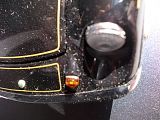 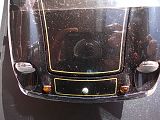 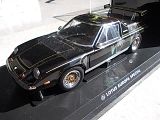 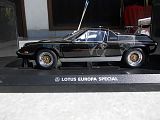 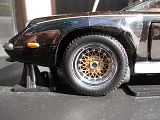 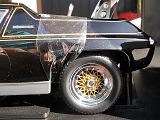 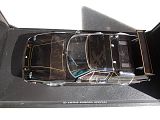 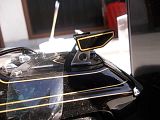 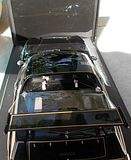  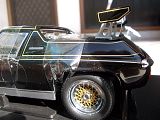 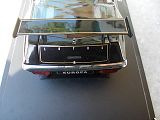 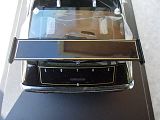 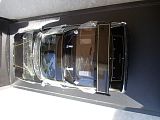 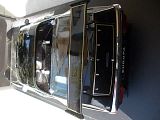 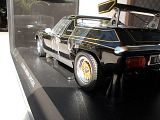 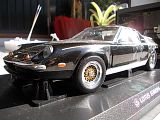 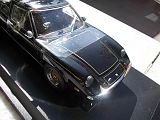  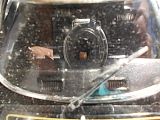 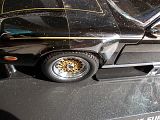 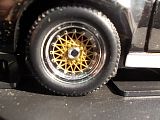 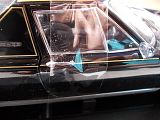 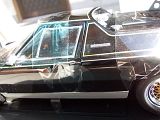 1973 John Player Special #26 (windscreen removed) In 1971, the Type 74 Europa Twin Cam was made available to the public, with a 105 bhp 1558cc [Lotus-Ford Twin Cam] engine (105 bhp US "Federal" emission standard emissions control version with Stromberg carbs, until the end of production) and a re-designed bodyshell to improve rearward visibility. Initially with the same gearbox as the earlier cars, once the supply had been exhausted in 1972 a new stronger Renault 4-speed gearbox (Type 352) was introduced. Mike Kimberley, who rose to become chief executive of Group Lotus, then a new engineer at Lotus, was appointed Chief Engineer of the Europa TC project. 1,580 cars were shipped as Europa "Twin Cam" before Lotus switched to a 126bhp "Big Valve" version of the engine The "Europa Special" version aspirated by Dell'Orto carburettors version of the same engine; in addition to offering a new Renault 5-speed (Type 365) gearbox option. It weighed 740 kg (1631 lb), Motor magaxine famously tested a UK Special to a top speed of 123 mph (198 km/h), did 0�60 mph in 6.6 seconds, and ran the 1/4 mile in 14.9 sec. This at a time when all road tests were carried out with both a driver and passenger, with only the driver on board the 0�60 mph time would have been well under 6 seconds, a phenomenal performance for the period. Introduced in September 1972 the first 200 big valve cars were badged and painted to honour the just won Team Lotus's 1972F1 World Championship title with John Player Special as sponsors, all with 5 speed gearbox, these were all black with gold pin stripe matching the livery of the GP cars � plus a numbered JPS dash board badge, becoming the first ever John Player Special commemorative motor vehicles. The "Special" name and colour scheme was planned to be dropped after the first 200 cars, reverting to the Twin Cam name, but such was the reaction to the new car that the name and pin stripe scheme remained until the end of Europa Production although colours other than black were made available. In the end only the numbered plaque distinguishing the first 200 JPS cars from other black Europa Specials. In total 4710 Type 74's were produced of which 3130 were "Specials". Terkait:
|
 |
|
|